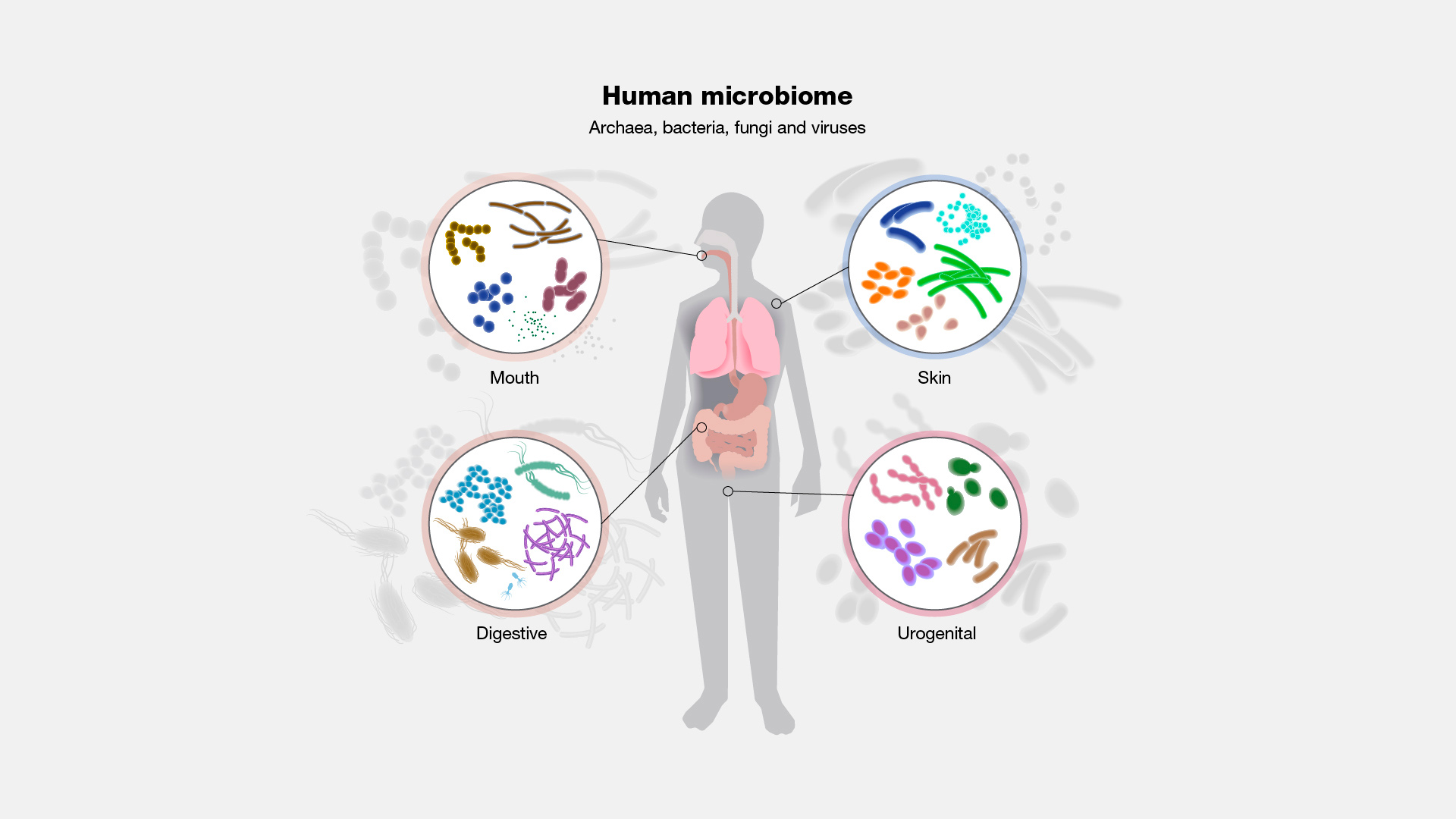
Microbiome
Definition
The microbiome is the community of microorganisms (such as fungi, bacteria and viruses) that exists in a particular environment. In humans, the term is often used to describe the microorganisms that live in or on a particular part of the body, such as the skin or gastrointestinal tract. These groups of microorganisms are dynamic and change in response to a host of environmental factors, such as exercise, diet, medication and other exposures.

Narration
Microbiome. The microbiome is the collection of all microorganisms, bacteria, fungi and viruses. Well, we used to think about the bacteria that colonized humans as bad. We always thought of them as pathogens, and we wanted to try to destroy them and thought that was the real benefit of antibiotics. But now we recognize that there also are good microbes, or commensal microbes, that provide needed help to the human and similarly would provide benefit to the environmental source. So for humans, bacteria that live in your gut help in the digestion of food, and bacteria that live on your skin help to break down the lipids to produce natural moisturizing factor for your skin. These microbes that live on your skin or in your gut also are wonderful in providing colonization resistance. They're basically taking up all the space so that the pathogens that might want to try to invade humans don't have the opportunity, and that's really our greatest protection against microbes that want to colonize us but don't help in our health.

Chief and NIH Distinguished Investigator
Translational and Functional Genomics Branch




